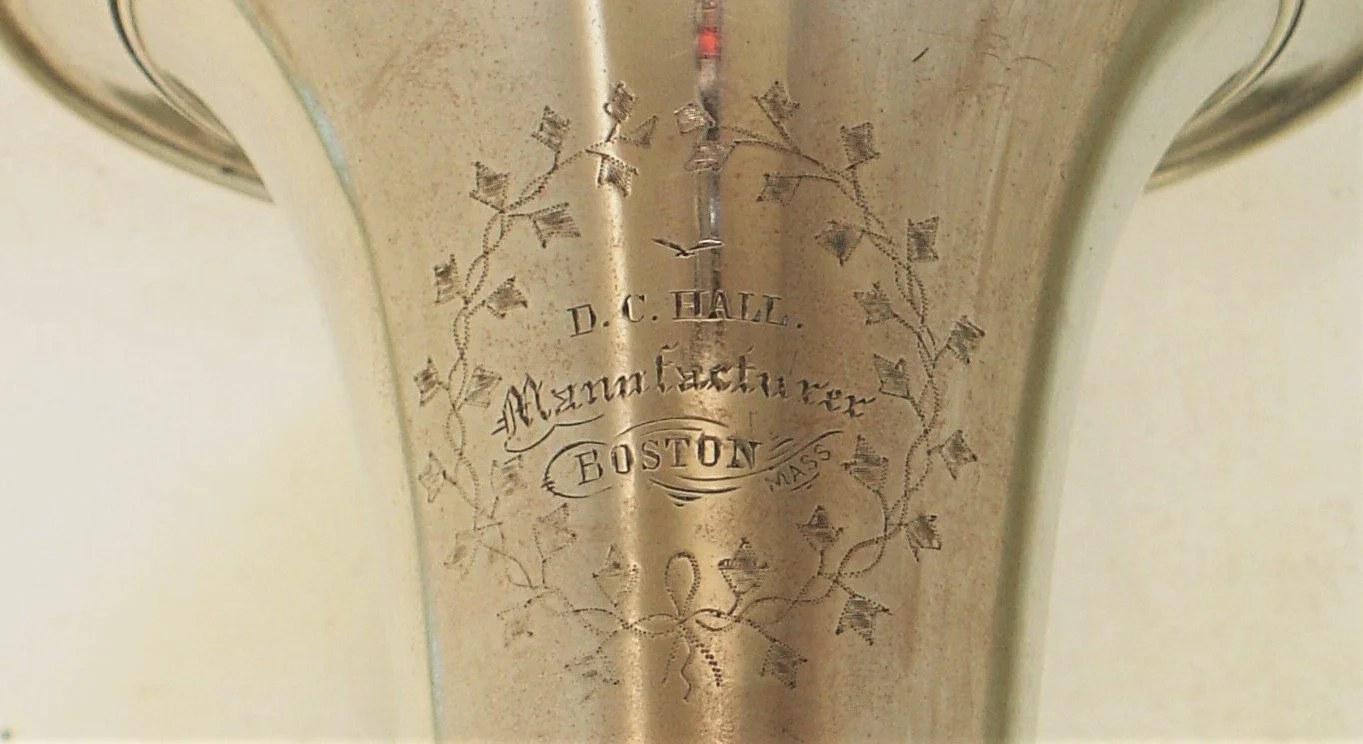Soprano Saxhorn by D.C. Hall
This Eb soprano Saxhorn or valve bugle has survived very well preserved and the restoration work was straightforward and uncomplicated. It needed a few screws and the end of the second valve lever. Most often the removable tuning shank is missing from this sort of instrument but this one retains what is unquestionably the original assembly.
David Culver Hall was a leading keyed bugle soloist and band leader for some years before 1862 when he came to have controlling interest in the instrument making shop that had been started by J. Lathrop Allen. Under Hall's leadership the little factory continued the very successful designs and high quality workmanship that was firmly established during the previous decades. This included the unique Allen rotary valves with flattened windways that enabled a quicker valve action than standard rotary valves. Other instruments from this shop shown on this web site are a very similar valve bugle with copper bell, an orchestra cornet and an alto horn.
The most unique feature of this instrument leads to the most complicated part of this job. The valve section is removable from the bell section by the removal of two nuts and a threaded ring that clamps the third valve tube to the main bell section tubing. It almost certainly had a second bell section that directed the sound over the shoulder. There are a number of American made cornets with this feature known including Graves Bb cornet and Eb valve bugle. This is the only instrument by Hall or Allan with removable valve section that I know of. The second bell was missing, unfortunately, but the owner wanted it recreated. Fortunately, the bell is very similar in design to that on the E.G. Wright Eb valve bugle which I already make copies of so I made one of German silver and the braces needed to complete the alternate section. This is pictured in the last image below.
Virtually everything that we know about Allen, Hall and the Quinby Brothers that eventually took over this shop is through the writings of Bob Eliason in his book "Early American Brass Makers" and articles published in the Journal of the American Musical Instrument Society.







